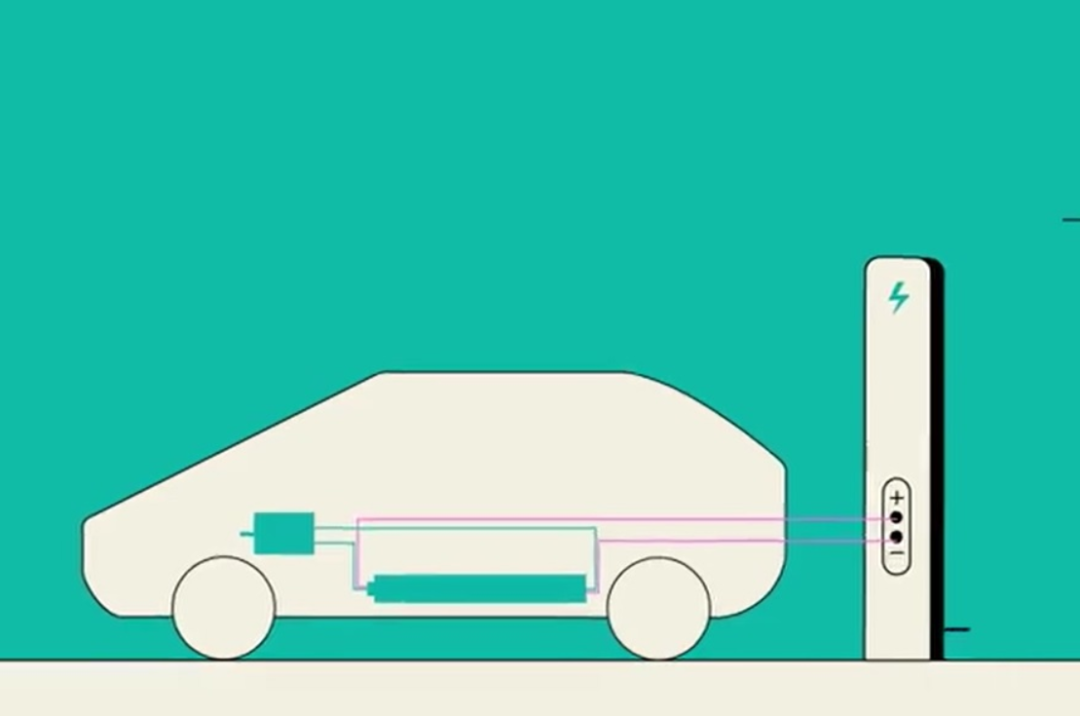
演讲题目:What's the best fuel for your car?
演讲简介:
从历史上看,多数汽车都用汽油驱动,但未来不一定如此:其它液体燃料和电力也能驱动汽车。这些选项有何区别呢?哪个最好?
中英文字幕
Historically, most cars have run on gasoline, but that doesn't have to be the case in the future:
纵观历史,多数汽车都使用汽油,但将来不一定如此:
other liquid fuels and electricity can also power cars.
其他液体燃料和电力也能为汽车提供动力。
So what are the differences between these options?
那么,这些选项有何区别呢?
And which one's best?
哪个最好?
Gasoline is refined from crude oil, a fossil fuel extracted from deep underground.
汽油是从原油中提炼出来的,原油是从地下深处抽取的化石燃料。
The energy in gasoline comes from a class of molecules called hydrocarbons.
汽油的能量来自一类叫做碳氢化合物的分子。
There are hundreds of different hydrocarbons in crude oil,
原油中有数百种不同的碳氢化合物,
and different ones are used to make gasoline and diesel— which is why you can't use them interchangeably.
汽油和柴油是由不同碳氢化合物生产的——这正是它们不能互换使用的原因。
Fuels derived from crude oil are extremely energy dense, bringing a lot of bang for your buck.
原油提炼的燃料能量密度极高,为你带来超值的好处。
Unfortunately, they have many drawbacks.
不幸的是,它们也有很多缺点。
Oil spills cause environmental damage and cost billions of dollars to clean up.
石油泄漏造成环境破坏,清理费用达数十亿美元;
Air pollution from burning fossil fuels like these kills 4.5 million people each year.
燃烧这种化石燃料造成的空气污染每年杀死 450 万人。
And transportation accounts for 16% of global greenhouse gas emissions, almost half of which comes from passenger cars burning fossil fuels.
交通运输占全球温室气体排放量的16%,其中几乎一半来自燃烧化石燃料的客用车。
These emissions warm the planet and make weather more extreme.
这些排放物令地球变暖、使天气更加极端。
In the U.S. alone, storms caused by climate change caused $500 billion of damage in the last five years.
过去五年因气候变化导致的恶劣天气里,仅在美国就造成了 5,000 亿美元的损失。
So while gas is efficient, something so destructive can't be the best fuel.
因此,虽然汽油是高效的,但具有如此破坏性的燃料不可能是最好的,
The most common alternative is electricity.
最常见的替代方案是电力。
Electric cars use a battery pack and electric motor instead of the internal combustion engine found in gas-powered cars,
电动汽车使用电池组和电机,而非汽油动力汽车的内燃机,
and must be charged at charging stations.
并且必须在充电站充电。
With the right power infrastructure, they can be as efficient as gas-powered cars.
有了合适的电力基础设施,它们能像汽油动力汽车一样高效。
If powered by electricity generated without fossil fuels, they can avoid greenhouse gas emissions entirely.
若用非化石燃料电力提供动力,它们可以完全避免温室气体排放。
They're more expensive than gas-powered cars, but the cost difference has been shrinking rapidly since 2010.
它们比汽油动力汽车更贵,但自2010年以来,成本差异一直在迅速缩小。
The other alternatives to gasoline are other liquid fuels.
汽油的其它替代品是其它液体燃料,
Many of these can be shipped and stored using the same infrastructure as gasoline, and used in the same cars.
其中许多可以用与汽油相同的基础设施运输和储存,并用于相同的汽车。
They can also be carbon-neutral if they're made using carbon dioxide from the atmosphere— meaning when we burn them,
若用大气中的二氧化碳发电,也可以是碳中和的—— 即当我们燃烧它们时,
we release that same carbon dioxide back into the air, and don't add to overall emissions.
同样的二氧化碳又释放回空气中,并不增加总排放量。
One approach to carbon-neutral fuel is to capture carbon dioxide from the atmosphere and combine its carbon with the hydrogen in water.
生产碳中和燃料的一种方法是从大气中捕获二氧化碳,再将其中的碳与水中的氢结合,
This creates hydrocarbons, the source of energy in fossil fuels— but without any emissions if the fuels are made using clean electricity.
从而产生碳氢化合物,即化石燃料的能源—— 但不产生排放,前提是使用清洁电力生产燃料。
These fuels take up more space than an energetically equivalent amount of gasoline— an obstacle to using them in cars.
与能量相当的汽油相比,这些燃料占用更多空间—— 这成为在汽车中使用的障碍。
Another approach is to make carbon-neutral fuels from plants, which sequester carbon from the air through photosynthesis.
另一种是用植物制造碳中和燃料,通过光合作用从空气中吸收碳。
But growing the plants also has to be carbon neutral— which rules out many crops that require fertilizer,
但是植物种植也必须是碳中和——这排除了许多需要施肥的作物,
a big contributor to greenhouse gas emissions.
肥料是温室气体排放的一大贡献者。
So the next generation of these fuels must be made from either plant waste or plants that don't require fertilizer to grow.
所以,下一代燃料必须用植物废料或不用肥料即可生长的植物。
Biofuels can be about as efficient as gasoline, though not all are.
生物燃料的效率与汽油差不多,但并非全部如此。
For a fuel to be the best option, people have to be able to afford it.
要使燃料成为最佳选择,人们必须负担得起才行。
Unfortunately, the high upfront costs of implementing new technologies and heavy subsidies for the producers of fossil fuels,
很遗憾,实施新技术的前期成本高,加上给化石燃料厂商的巨额补贴,
mean that almost every green technology is more expensive than its fossil-fuel-based cousin.
这意味着几乎所有绿色技术都比基于化石燃料的电力更贵,
This cost difference is known as a green premium.
这种成本差异称为绿色溢价。
Governments have already started subsidizing electric vehicles to help make up the difference.
政府已开始补贴电动汽车以帮助弥补差价。
In some places, depending on the costs of electricity and gas, electric cars can already be cheaper overall, despite the higher cost of the car.
在一些地方,尽管电动汽车的成本更高,但电动汽车总体上已经便宜了,这取决于电力和汽油的成本。
The other alternatives are trickier, for now— zero-carbon liquid fuels can be double the price of gasoline or more.
目前,其他选择更棘手—— 零碳液体燃料的价格可能是汽油的两倍或更高。
Innovators are doing everything they can to bring green premiums down, because in the end,
创新者正尽力降低绿色溢价,因为最终来说,
the best fuel will be both affordable for consumers and sustainable for our planet.
最好的燃料不但消费者负担得起,而且对地球可持续。
视频、演讲稿均来源于TED官网 |
|
 /1
/1 